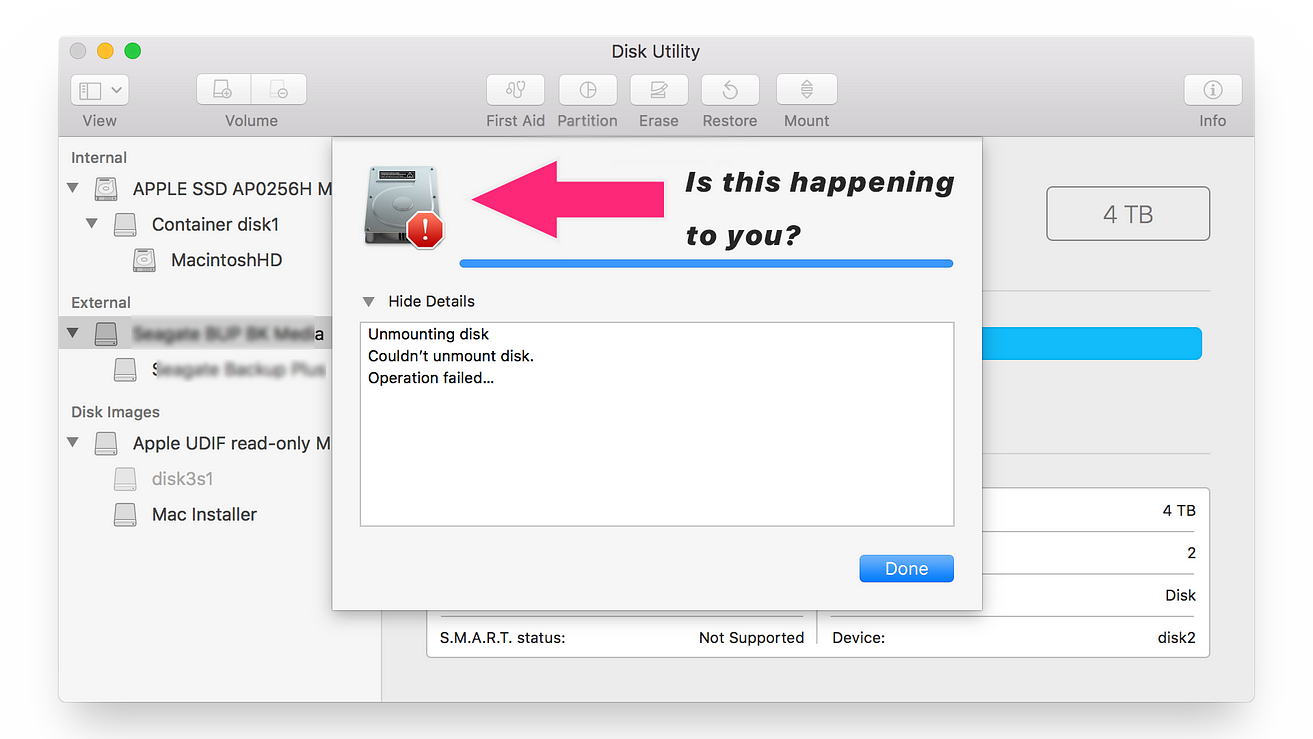
- GET MAC TO READ HD FORMATTED FOR WINDOWS INSTALL
- GET MAC TO READ HD FORMATTED FOR WINDOWS MANUAL
- GET MAC TO READ HD FORMATTED FOR WINDOWS PRO
- GET MAC TO READ HD FORMATTED FOR WINDOWS SOFTWARE
- GET MAC TO READ HD FORMATTED FOR WINDOWS TRIAL
It didn't work perfectly for me - but the issues I ran into were solved fairly easy with Google searches. Macbook Pro, Retina, 13", Early 2015 (120GB SSD, 8GB RAM) As always, backup your data beforehand just in case!
GET MAC TO READ HD FORMATTED FOR WINDOWS TRIAL
I didn't have access to one so I just installed a VMware trial version on my Mac and used it for the Windows part of the setup. You'll need a computer running Windows to do this entire process. The issue you are running into is that you need to setup an EFI boot in order to be able to boot and run Windows off a USB drive. I ran into this issue a while back when I wanted to run Windows off and EHD so it wouldn't take up any space on my Macbook's HD. So, I seem to be effecting something with that command, but I still can't boot from my Windows bootable USB drive. The log in screen, though, was much slower than usual, as if something else was happening in the background. Boot was slower, but then I was presented with the normal log-in screen. Sudo bless -mount "/Volumes/WDO_Media32/" -legacy -setBoot -nextonlyĪnd then did a restart.

GET MAC TO READ HD FORMATTED FOR WINDOWS INSTALL
Or maybe a better question, if there isn't a simple answer, would be what does Bootcamp do to allow booting from a Windows install DVD or to allow Windows, once installed, to boot?ĮDIT: I was able to sort of get results using the bless command in Terminal. So, what do I have to do to get my Mac to recognize and boot from another OS on a USB flash drive? I have had the same issue trying to use the Ultimate Boot CD on a USB, various Live USBs for Linux, etc. Specifically, I was running Windows 7 on my Mac to create the bootable disk, which has Windows Defender Offline on it. 34 Responses to Reading Mac Formatted Drives on Windows Devices (and Windows Formatted Drives on Mac Devices) Says: February 16th, 2013 at 1:23 pm. I know the drive works and is bootable, because it works with my friend's Windows PC. This would allow you to copy the files onto another hard drive running ExFAT or FAT32 file systems which work on both macOS and Windows.I'm trying to get my Mac to boot from a USB flash drive.
GET MAC TO READ HD FORMATTED FOR WINDOWS SOFTWARE
If you don't fancy using any Windows software to do this, or don't want to pay you could look at borrowing a friends Mac which would natively be able to read both HFS+ and APFS drives if it is running macOS High Sierra.

If the computer is running APFS the options are more limited, there is some new software from Paragon which also now supports APFS apparently. There are a number of applications available for Windows that can read HFS+ formatted drives, although I have no personal experience with using any of these this article suggests 4 options: APFS it is a spinning disk it is most likely running HFS+. Drive formatĪfter you've got the drive out the next question is whether it was running APFS or HFS+ file systems. All updated versions of Windows XP and later.
GET MAC TO READ HD FORMATTED FOR WINDOWS PRO
This applies to all models of MacBook Pro prior to 2013. If your dad’s new 4TB EHD (external hard drive) has been formatted in FAT32 or exFAT, then both his PC and your Mac should be able to read it. These are by far the easiest type of drive to remove and recover data from as they can be easily removed by following a take apart guide from for your model, and the drive can then be connected to an appropriate USB to SATA or IDE adapter available readily on eBay or Amazon. This applies to MacBook Pro models from 2013 to 2016. The frequency can be inputted through input. This type of SSD is a removable stick, this can be removed easily using a take apart guide from but would require a computer that supports this kind of SSD or a suitable adapter to read the data. While a version of SOUND FORGE Pro exists on the Mac, only Windows users get the cheaper Audio Studio 12. Soldered SSDįirst consideration is that more modern MacBook Pros' drives are soldered onto the logic board of the computer and cannot be easily removed, only Apple or an Apple Authorised Service Provider can retrieve this data. The type of drive your MacBook Pro will dictate how you connect the old MacBook Pro drive to your PC. In the mean time this will give you some idea of what to do: Drive type

What actually happened to the Mac to stop it working?.What version operating system was the Mac running?.What model of MacBook Pro is it (which year and specification).If you can provide some more information I can tailor the answer to you a bit more:
GET MAC TO READ HD FORMATTED FOR WINDOWS MANUAL
There was a separate track for each Mac/Windows/Linux and several manual and. There are a number of variables we need to answer before we can answer the question around what kind of drive it is, and what format the drive was in. Here at balena we have thousands of users working through our getting.


 0 kommentar(er)
0 kommentar(er)
